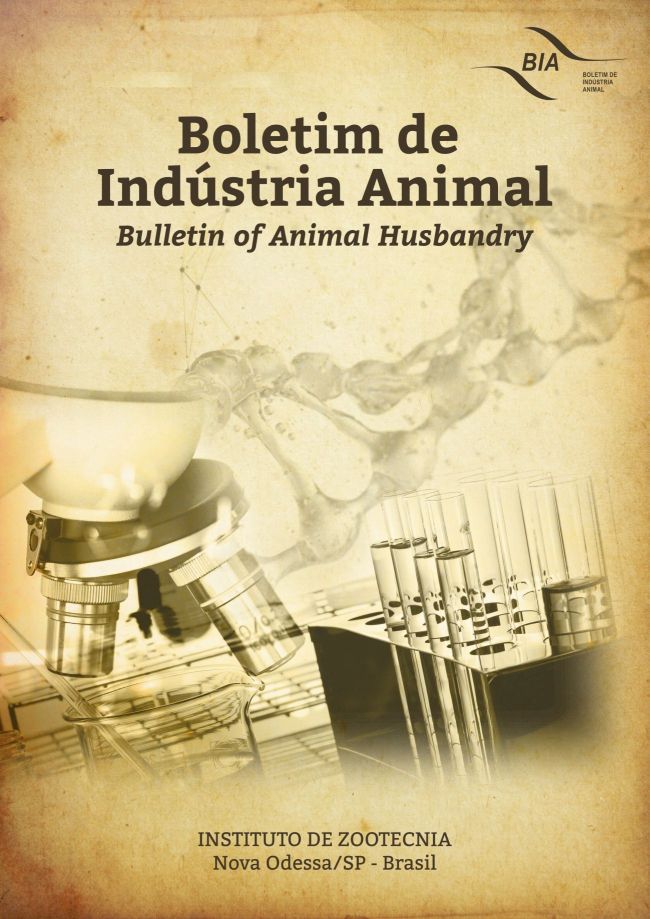Pupunha heart of palm residue silage as an option of roughage for ruminants
DOI:
https://doi.org/10.17523/bia.2020.v77.e1491Palavras-chave:
Bactris gasipaes, digestibility, animal nutrition, sustainabilityResumo
It was aimed in this study to evaluate the ensiled pejibaye residue in the feeding of ruminants as roughage. For the in vitro digestibility assay, a randomized block design was used, with four treatments (pejibaye residue without additives; pejibaye residue + banana residue; pejibaye residue + rice residue and pejibaye residue + citrus pulp), with four replications. The variables studied were: chemical composition, specific mass, pH, average particle size, fermentation temperature and fermentative losses. Apparent digestibility was performed with sheep in a completely randomized design, to evaluate the same treatments mentioned above, using five replications. Heart-of-palm pejibaye residue silages showed average particle size, pH and density values within the range appropriate for their manufacture. Among the additives used in this study, silage with 15 g/100g of rice provided improvements in several nutritional parameters, such as DM, NDF, ADF, CF and NDF/NFC. High moisture content impairs the ensiling process, but it was solved with high dry matter content ingredients addition to promote the material stability.
Downloads
Downloads
Publicado
Edição
Seção
Licença
Os autores não serão remunerados pela publicação de trabalhos, pois devem abrir mão de seus direitos autorais em favor deste periódico. Por outro lado, os autores ficam autorizados a publicar seus artigos, simultaneamente, em repositórios da instituição de sua origem, desde que citada a fonte da publicação original seja Boletim de Indústria Animal. A revista se reserva o direito de efetuar, nos originais, alterações de ordem normativa, ortográfica e gramatical, com vistas a manter o padrão culto da língua e a credibilidade do veículo. Respeitará, no entanto, o estilo de escrever dos autores. Alterações, correções ou sugestões de ordem conceitual serão encaminhadas aos autores, quando necessário. Nesses casos, os artigos, depois de adequados, deverão ser submetidos a nova apreciação. As opiniões emitidas pelos autores dos artigos são de sua exclusiva responsabilidade. Todo o conteúdo deste periódico, exceto onde está identificado, está licenciado sob a Licença Creative Commons Attribution (CC-BY-NC). A condição BY implica que os licenciados podem copiar, distribuir, exibir e executar a obra e fazer trabalhos derivados com base em que só se dão o autor ou licenciante os créditos na forma especificada por estes. A cláusula NC significa que os licenciados podem copiar, distribuir, exibir e executar a obra e fazer trabalhos derivados com base apenas para fins não comerciais.













